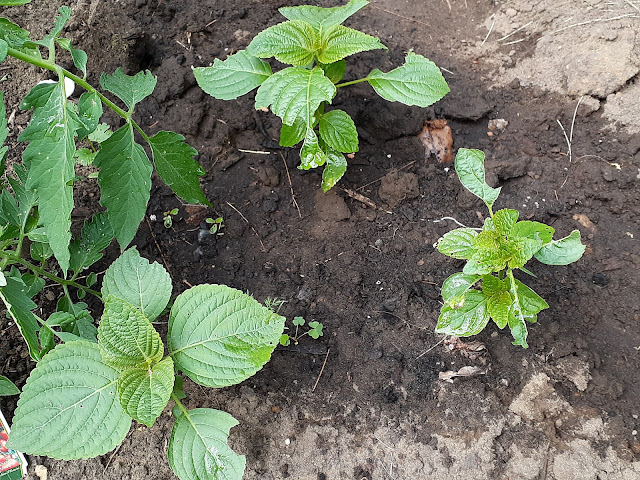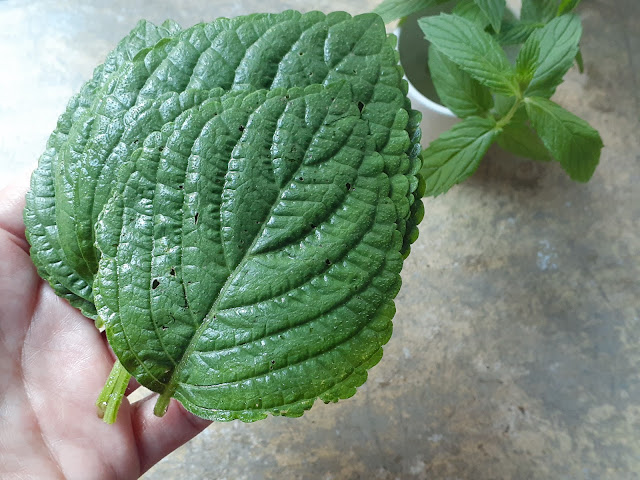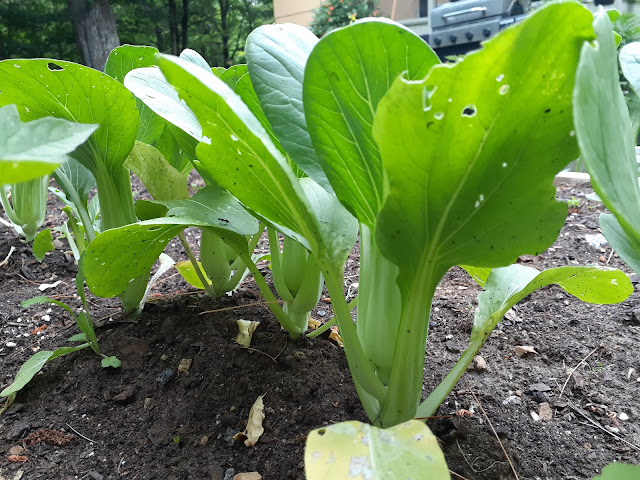Our vegetables were attacked by cutworms, but cutworms are not the only ones who damage our crops.
These are Korean Shiso which were eaten by pests. We imagine that it was other types of moth larvaes or flies.
When I find some cutworms and other types of moth larvaes I always try to catch them, but some of them are active at night which is troublesome.
There is no scientific evidence, but some gardeners say that moth larvaes don’t like egg shells. So I put egg shells around the vegetable seedlings that we have transplanted into the garden and it seems to work so far. However, we cannot do this to all of our vegetables because the consumption of eggs in our house is limited:)
I planted garlic because pests don’t seem to like the smell of garlic, but the garlic needs a bit more time to grow.
Letting weeds grow is another way to protect your vegetable seedlings from moth larvaes. Because they prefer tender stems, younger weeds can be eaten earlier than the vegetable seedlings.
If you already have moth larvaes or cutworms, they will eventually leave your land after they transform into moths, but it is said that one moth can produce 1,000 eggs, so we don’t want them in the first place.
In order not to allow moths to lay eggs on your plants, some farmers use a net to cover their crops especially during night time since most of them are active at night.
Tomato leaves have been eaten and become full of holes. The insects seem to dislike the scent of marigolds, so I scattered marigold petals. I also spray chilli pepper water to the leaves though I am not sure yet about its effectiveness.
Some hosta leaves were also chewed by insects. This once had just been transplanted after dividing, so it probably doesn’t have much resistance.
It seems that coffee grounds can repel pests, but since coffee grounds are acidic, you can use it only on specific plants. Hostas likes acidic soil, so it’s perfect.
<<< Previous Post: Harvesting Korean Shiso
Next Post >>> We harvested Shanghai Choy (Pak Choy)






